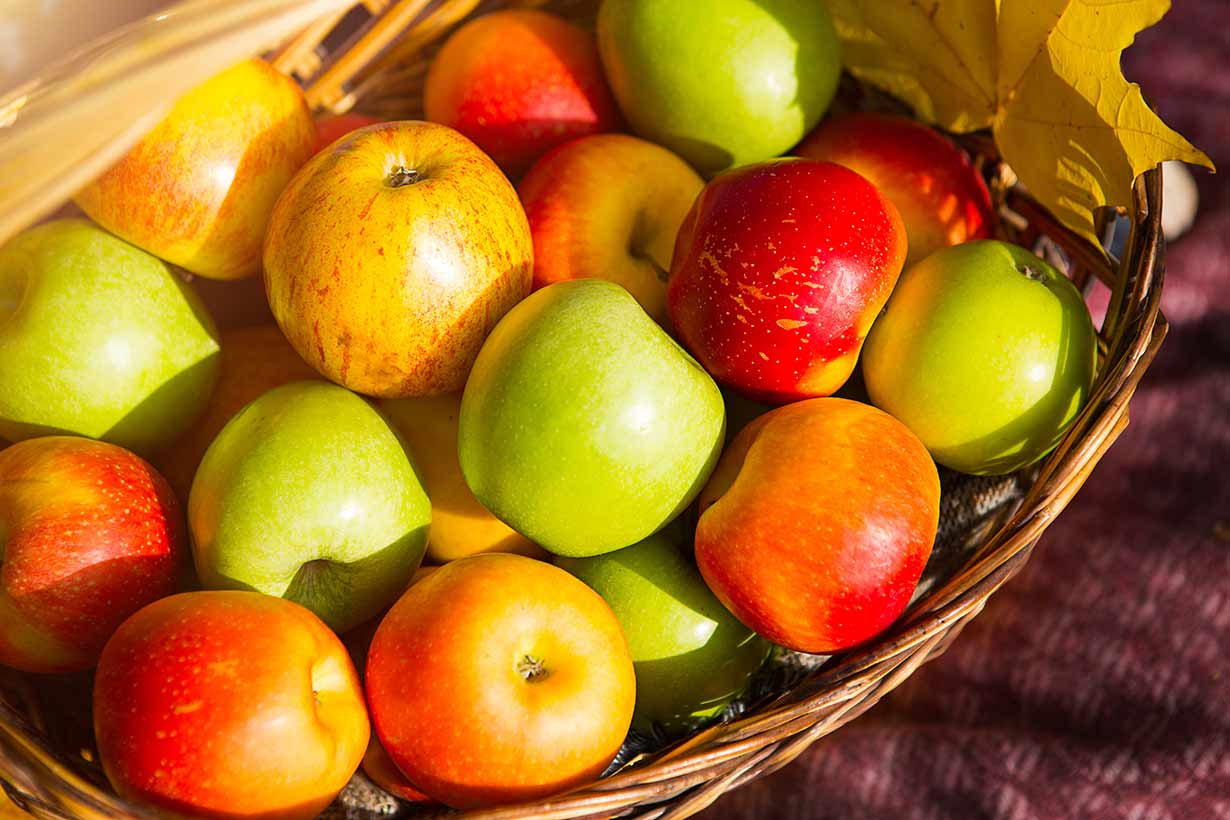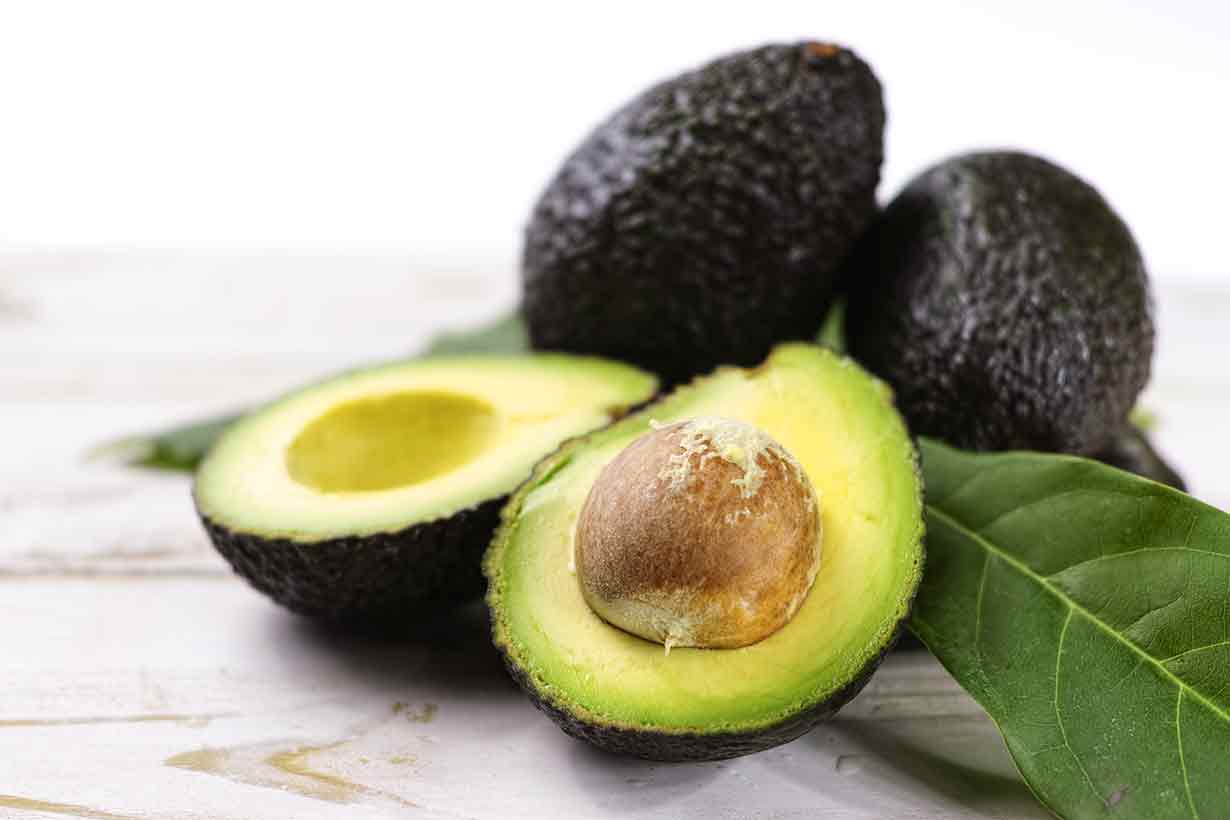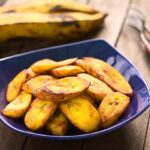Cherimoya is an exotic fruit with a unique appearance and a sweet and creamy taste.
This article examines the nutritional values of cherimoya, its benefits and potential downsides, and more.
What Is Cherimoya?
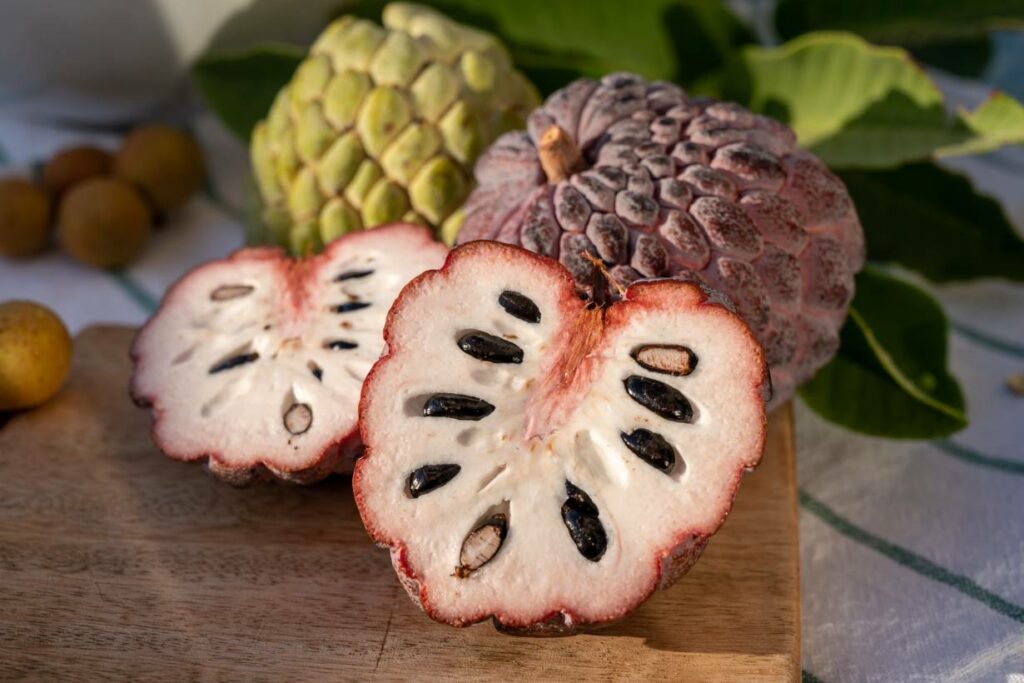
Cherimoya fruits grow on small trees known scientifically as Annona cherimola, belonging to the genus Annona (1).
As shown in the above image, cherimoya flesh contains several dark brown-to-black seeds, and a hard, green peel surrounds it.
Cherimoya is part of the same family as the custard apple fruit (Anona reticulata), and they share a very similar appearance. Additionally, despite being a different fruit, cherimoyas are sometimes called custard apples.
The fruit has a unique white and creamy flesh with a soft texture and a mildly sweet and fruity flavor. Comparisons to fruits such as mango, papaya, pineapple, pear, and avocado are common concerning cherimoya’s taste and texture.
Cherimoya fruit grows in tropical and subtropical regions around the world, making it a type of tropical fruit. Among the major producers, Spain, specifically the Andalusia region, is the world’s leader in cherimoya production (2, 3).
Nutrition Facts
Now that we have looked at what cherimoya looks and tastes like, what does it offer nutritionally?
Firstly, here are the full nutritional values of cherimoya fruit.
The source of nutritional data is the USDA’s FoodData Central Database. Daily values have been calculated using USDA data alongside the FDA’s recommended ‘daily values’ (4, 5).
| Name | Amount | % Daily Value (% DV) |
|---|---|---|
| Calories | 176 kcal | |
| Carbohydrates | 41.6g | 15.1% DV |
| Fiber | 7.05g | 25.2% DV |
| Sugars | 30.3g | |
| Fat | 1.6g | 2.1% DV |
| Saturated | 0.55g | 2.8% DV |
| Monounsaturated | 0.13g | |
| Polyunsaturated | 0.44g | |
| Omega-3 | 0.37g | |
| Omega-6 | 0.07 g | |
| Protein | 3.69 g | 7.4% DV |
| Cholesterol | 0 mg | 0% DV |
Vitamins
| Vitamin | Amount | % Daily Value (% DV) |
|---|---|---|
| Folate | 23 mcg | 5.8% DV |
| Vitamin A, RAE | 1.5 mcg | 0.2% DV |
| Vitamin B1 (thiamin) | 0.24 mg | 20% DV |
| Vitamin B2 (riboflavin) | 0.31 mg | 23.8% DV |
| Vitamin B3 (niacin) | 1.51 mg | 9.4% DV |
| Vitamin B5 (pantothenic acid) | 0.81 mg | 16.2% DV |
| Vitamin B6 (pyridoxine) | 0.60 mg | 35.3% DV |
| Vitamin B12 (cobalamin) | 0 mcg | 0% DV |
| Vitamin C | 29.6 mg | 32.9% DV |
| Vitamin D | 0 mcg | 0% DV |
| Vitamin E | 0.64 mg | 4.3% DV |
| Vitamin K | 0 mcg | 0% DV |
Minerals
| Mineral | Amount | % Daily Value (% DV) |
|---|---|---|
| Calcium | 23.5 mg | <0.1% DV |
| Copper | 0.16 mg | 18% DV |
| Iron | 0.64 mg | 3.6% DV |
| Magnesium | 40 mg | 9.5% DV |
| Manganese | 0.22 mg | 9.6% DV |
| Phosphorus | 61.1 mg | 4.9% DV |
| Potassium | 674 mg | 14.3% DV |
| Sodium | 16.4 mg | 0.7% DV |
| Zinc | 0.38 mg | 3.5% DV |
Other
- Cherimoya fruit is 79% water by weight
Benefits
Here is an overview of the main benefits of cherimoya fruit.
Rich In Fiber
Cherimoya is a rich source of fiber, with a typical 235-gram fruit providing more than seven grams (25% of the daily value) (4).
The fruit contains a high proportion of soluble fiber. A recent 2023 systematic review of 181 randomized controlled trials found that soluble fiber helps to lower LDL-Cholesterol (sometimes known as “bad” cholesterol) in a dose-response manner (6).
High In Vitamin C
Vitamin C is one of the nutrients present in cherimoya in the highest concentrations.
Each cherimoya fruit contains 29.6 mg of vitamin C, 33% of the daily value (4, 5).
On a per-100-gram basis, cherimoya offers 12.60 mg of vitamin C, 14% of the daily value.
Vitamin C is an essential vitamin that plays a vital role in the immune system and protects cells from damage by free radicals (6).
Good Source of B Vitamins
Aside from vitamin B12, cherimoya provides a good quantity of each B vitamin.
The fruit contains particularly high levels of vitamins B1, B2, and B6, offering more than 20% of the daily value for each one (4, 5).
Among their functions, B vitamins play an important role in energy production (7).
High Potassium Content
Potassium is a crucial mineral in regulating blood pressure, but many people do not consume it in sufficient quantities.
In this regard, data from the US National Health and Nutrition Examination Survey (NHANES) demonstrated that the prevalence of hypokalemia (low blood potassium levels) increased from 3.78% of people to 11.06% between the years 1999 and 2016 (8).
Increasing plant food intake is a simple way to obtain more potassium, and cherimoya is one of the most potassium-rich fruits.
A typical cherimoya fruit has 674 mg of potassium, 14% of the daily value (4, 5).
Contains High Levels of Polyphenols
Cherimoya contains numerous polyphenols, compounds found in plant foods that may have various beneficial effects (9).
Research into the phytochemical profile of cherimoya demonstrates that the fruit contains high levels of flavan-3-ols. Additionally, it also contains a variety of catechin and gallocatechin compounds (10, 11).
Downsides
The seeds contain toxins
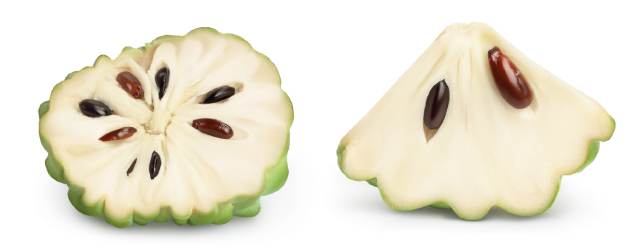
The central potentially negative aspect of cherimoya fruit is that the fruit’s seeds and peel contain toxins called Annonaceous acetogenins (12, 13).
All parts of the fruit other than the flesh are inedible and should not be eaten. That said, the seeds and peel are extremely hard and not something one would wish to eat.
The flesh of the cherimoya fruit is perfectly edible, and it is easy to avoid eating the (big) seeds.
Can Be Expensive
It is often challenging to find cherimoya for sale in countries far from where the fruit natively grows.
In stores like Whole Foods that sell it, the price can be pretty high. The price can vary depending on location and season at farmer’s markets and imported fruit and exotic fruit stores. However, it will rarely be a price considered cheap.
As a result, the expense of cherimoya will understandably be a barrier for people.
How To Eat Cherimoya
There are many ways to eat cherimoya (just so long as you don’t eat the seeds).
Many people enjoy eating cherimoya alone for its sweet and creamy taste. The best way to do this is as follows:
- Cut the cherimoya in half
- Remove the seeds from each half with the tip of a knife
- Once the seeds are removed, slice each half of the cherimoya into four or five pieces
- Hold each piece using two hands and eat the flesh out of the peel
Cherimo can also be used in a versatile range of recipes, varying from juices and smoothies to cooked dishes.
Where To Buy Cherimoya
Finding cherimoya in regions where it doesn’t natively grow can be difficult.
However, here are several places from where it is possible to buy the fruit:
- Whole Foods
- Local farmer’s markets
- Import/exotic fruit stores
- Order online for delivery
Common Questions About Cherimoya
Here are some answers to commonly-asked questions about cherimoya fruit.
When the skin of a cherimoya fruit still has a bright green appearance and a hard texture, it isn’t yet ready to eat and will need several days to ripen. A ripe cherimoya’s skin will be starting to brown, and it will feel a little softer when you squeeze it.
A 235-gram cherimoya contains 30.3 grams of sugar, which is 12.9 grams per 100 grams. On a gram-for-gram basis, the sugar content of cherimoya is just slightly more than that of blueberries.
Some people will eat a whole cherimoya fruit, approximately 235 grams. A cup is another typical serving, which according to the USDA, is around 160 grams of cherimoya (4).
Cherimoya has several nutritional benefits ranging from its moderately high provision of vitamins and minerals to its fiber and polyphenol content. As a result, it can be part of a healthy dietary pattern.
Final Thoughts
Cherimoya is an interesting fruit with an exciting appearance and an enjoyable flavor.
In addition, the fruit has the benefit of offering several nutritional benefits. Among these, it is an excellent source of fiber, potassium, vitamin C, and numerous B vitamins.
It is worth trying for those that can find cherimoya selling for a reasonable price.

